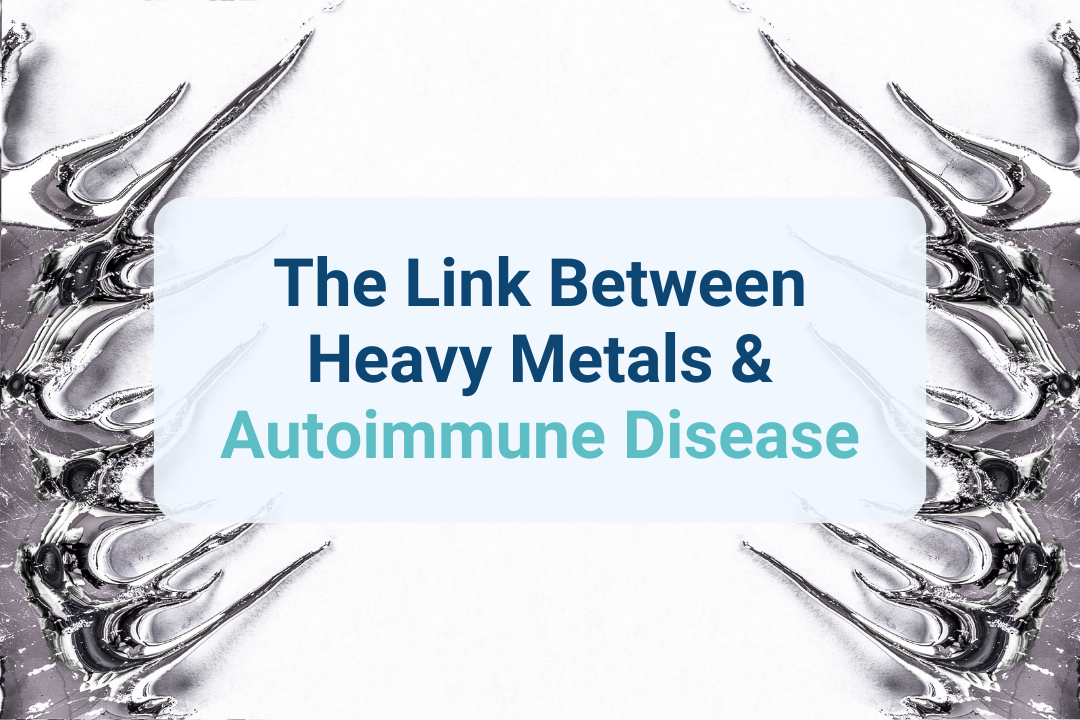Understanding Causes of Low & High Total Immunoglobulins
.png?width=1080&height=500&name=Copy%20of%202023-03%20-%20Understanding%20SIBO%20-%20Chart%20(1).png) Immunoglobulins, or Ig antibodies, are proteins that the immune system produces when a foreign substance is detected. The body produces immunoglobulins when exposed to foreign substances like bacteria or viruses. Allergic reactions or sensitivities to specific foods may also trigger antibody production.
Immunoglobulins, or Ig antibodies, are proteins that the immune system produces when a foreign substance is detected. The body produces immunoglobulins when exposed to foreign substances like bacteria or viruses. Allergic reactions or sensitivities to specific foods may also trigger antibody production.
Immunoglobulins are a part of the immune system’s response to foreign invaders and help protect the body against pathogens.
There are five classes of immunoglobulins, each with its own unique composition and function:
- IgG— Part of the secondary immune response and widely abundant in the body; neutralizes toxins, viruses, and bacteria
- IgM — Part of the primary immune response, plays a role in the development of some autoimmune diseases
- IgA — Provides the primary immune response against local infections, protects mucous membranes, and prevents pathogens from entering the circulatory system
- IgD — Less abundant than other antibodies, believed to be involved in the activation of B cells, which produce antigen-specific antibodies
- IgE — Primarily defends against invasion from parasites, responsible for allergic reactions
As with anything in the human body, it's essential to maintain a proper balance when it comes to immunoglobulins. When an individual isn’t producing enough antibodies, they become more susceptible to infection and the development of diseases. On the other hand, an overproduction of antibodies can lead to numerous health problems, including allergies and autoimmune disorders.
In this article, you’ll learn the causes, associated conditions, and treatments for low and high total immunoglobulins, and how to identify them with functional lab testing.
You can also download this free printable chart as a quick reference guide for potential causes of low and high total immunoglobulins.
Identifying Immunoglobulin Imbalances with Functional Testing
.png?width=353&height=235&name=_2023-05%20-%20High%20and%20Low%20Immunoglobulins%20(3).png) The most effective way to identify immunoglobulin imbalances is through advanced functional lab testing. The Vibrant Wellness Total Immunoglobulins Test measures levels of multiple types of immunoglobulins in the body to help you get to the root cause of symptoms.
The most effective way to identify immunoglobulin imbalances is through advanced functional lab testing. The Vibrant Wellness Total Immunoglobulins Test measures levels of multiple types of immunoglobulins in the body to help you get to the root cause of symptoms.
The Total Immunoglobulins Test provides a baseline assessment of antibody levels in the body, which enables you to accurately interpret specific antibody tests for antigens from infections or food. Testing total immunoglobulins is especially important if a patient is on IV therapy, or taking steroids, immunosuppressive medications, biologic agents, or other immunomodulating medications, as they may get falsely lower or higher antibody results.
Additional Lab Testing to Consider
Additional antibody testing you can pair with the Total Immunoglobulins panel includes:

- Food Zoomers— detect either a sensitivity (IgG) or allergy (IgE) to a specific food
- Food Sensitivity testing— detects sensitivity (IgG/IgA) to a specific food
- Food Additives testing— detects sensitivity (IgG/IgA) to 57 common food additives
- Candida + IBS Profile— assesses the presence of Candida (fungal) overgrowth, IgG + IgA and IgM antibody levels associated with Irritable Bowel Syndrome (IBS) IgG, and autoimmune-related alterations in intestinal motility
- Neural Zoomer & Neural Zoomer Plus— measure immune reactivity (IgG + IgA and IGM) to structures, tissues, cells, and chemicals in the brain and peripheral nervous system
- Tickborne Disease Panel— detects antibodies (IgG and IgM) and DNA linked to Lyme disease, TBRF, and other tickborne co-infections
Combining these tests will help differentiate between an immune reaction to a particular antigen, like a virus, bacteria, or food particle, vs. an immunoglobulin imbalance, which could indicate a more serious issue. Remember to monitor and adjust treatment based on patient lab test results to ensure the treatment plan aligns with the patient's symptoms and condition.
Low Total Immunoglobulins: Hypogammaglobulinemia

Hypogammaglobulinemia is a condition characterized by low levels of immunoglobulins in the blood. An abnormal loss or breakdown of antibodies at abnormal rates can cause low total immunoglobulins.
Many factors can contribute to Hypogammaglobulinemia, including:
- Genetic variations
- Infections
- Malnutrition
- Autoimmune disease
Two types of Hypogammaglobulinemia can occur in the body: Primary and secondary.
Primary or inherited immunoglobulin deficiency occurs in rare disorders where the body can’t produce one or more classes of immunoglobulins.
Secondary or acquired immunoglobulin deficiency is the more common type and occurs when an underlying condition or factor causes an abnormal loss or increased catabolism (breaking down) of antibodies. This type of deficiency can also occur when conditions affect the production of antibodies.
Conditions that can impact antibody production include:
- Nephrotic syndrome and other severe renal diseases
- Severe burns
- Sepsis
- Protein-losing enteropathy
- Intestinal lymphangiectasia
Autoimmune diseases like lupus or rheumatoid arthritis can also cause Hypogammaglobulinemia by impacting antibody production.
See other conditions that could affect Hypogammaglobulinemia.
Risks of Low Immunoglobulin Levels

A lack of immunoglobulins can be dangerous because it weakens the immune system's ability to fight off infections, making patients more susceptible to recurrent and severe infections.
Patients may then develop chronic respiratory infections, gastrointestinal infections, or sepsis. Hypogammaglobulinemia is also risky because patients with the condition may not respond to traditional treatment methods for infection.
Finally, Hypogammaglobulinemia can also increase the risk of developing autoimmune diseases and certain types of cancer, including lymphoma and gastrointestinal cancers.
Ultimately, immunoglobulin deficiency compromises the immune system and increases vulnerability to disease.
Functional Medicine Treatments for Low Total Immunoglobulins

There are various strategies you can implement to treat patients with low total immunoglobulins:
Addressing Underlying Causes
For secondary causes of low immunoglobulins, such as infections or medical conditions, work to identify and treat the root cause. Reference the Causes of Low or High Total Immunoglobulins chart to see a comprehensive list of conditions linked to immunoglobulin deficiency. Additionally, take cues from patient history and lab diagnostics to uncover if a disease or more serious issue is at the root of immunoglobulin imbalance.
Treatments you can implement include antibiotic or antiviral treatments, managing protein-losing enteropathies, or adjusting medications that may be causing immunosuppression.
Nutritional Support
Ensuring optimal nutrition is vital for supporting the immune system. Consider recommending a diet rich in antioxidants, vitamins, and minerals, along with targeted supplementation, such as vitamin C, zinc, and vitamin D, to support your patients’ immune health.
Lifestyle Modifications
Stress management, regular exercise, and good sleep hygiene can help improve overall health and support the immune system.
The immune system produces cytokines during sleep—proteins that help combat infection and inflammation. Thus, getting enough sleep is vital for proper immune function. Sleep has also been shown to reduce stress, further supporting the immune system.
Consistent exercise increases the circulation of immune cells, alleviating inflammation and stress levels. Additionally, research has shown exercise can increase the production of antibodies and T-cells, strengthening the immune response.
Immunoglobulin Replacement Therapy
Patients with primary immunodeficiency disorders may benefit from immunoglobulin replacement therapy, which involves the administration of intravenous or subcutaneous immunoglobulin (IVIG/SCIG) to increase the body's immunoglobulin levels and help protect against infections.
Reference the Causes of Low or High Total Immunoglobulins chart to identify conditions and factors that may be causing or affecting immunoglobulin deficiency.
When treating patients for low total immunoglobulins, it’s critical to customize treatment plans based on specific patient history and lab diagnostics, as treatments will vary based on the patient’s Hypogammaglobulinemia type (inherited or acquired), the current state of infection or disease, and symptoms.
High Total Immunoglobulins: Hypergammaglobulinemia

Hypergammaglobulinemia occurs when the body produces too many immunoglobulins. Various ailments can cause high total immunoglobulins including:
- Acute and chronic infections (including HIV, Epstein-Barr virus, and cytomegalovirus)
- Connective tissue diseases— rheumatoid arthritis, systemic lupus erythematosus, and scleroderma
- Chronic active autoimmune hepatitis (high levels of IgG antibodies)
- Primary biliary cirrhosis (high levels of IgM antibodies)
- Hematologic disorders
- Non-hematologic malignancies
- Intrauterine infections amongst newborns — the body produces an excess of IgM antibodies within cord blood, targeting the offending pathogen
- Various cancers, including lymphoma and myeloma
There are two types of immunoglobulin excess: Polyclonal and Monoclonal.
Polyclonal excess refers to an overabundance of multiple types of immunoglobulins from many different plasma cells.
Monoclonal excess refers to the overabundance of only one type of immunoglobulin.
Risks of High Total Immunoglobulins
While high total immunoglobulins indicate an active immune response, this is not always a good thing. When the immune system is overly active, it can lead to conditions such as autoimmunity.
In the case of immunoglobulin excess, the hyperactivity of B cells (which produce immunoglobulins) may cause autoimmunity.
Too many antibodies can also signify chronic infections such as HIV. The immune system can become overactive when exposed to viruses like HIV because the virus targets immune cells, specifically T Cells. The body then produces more of these cells to compensate for the loss. As the disease progresses, a patient will eventually become immuno-suppressed, making the body much more vulnerable to contracting additional infections.
Additionally, if there are too many antibodies in the body, immune complexes, or clumps of immunoglobulins and other substances, can form and get stuck in tissue. This can lead to inflammation, swelling, and tissue damage.
Functional Medicine Treatments for High Total Immunoglobulins

Addressing Underlying Causes
Identifying and treating chronic infections, autoimmune disorders, or neoplastic conditions that may be causing elevated immunoglobulin levels is crucial. Reference the Causes of Low or High Total Immunoglobulins chart for a comprehensive list of conditions linked to immunoglobulin excess. Additionally, take cues from patient history and lab diagnostics to uncover if a disease or more serious issue is at the root of immunoglobulin imbalance.
Treatments you can implement include antimicrobial therapies, immunosuppressive medications, or targeted cancer treatments.
Anti-inflammatory Diet
A diet rich in anti-inflammatory foods, such as omega-3 fatty acids, fruits, vegetables, and whole grains, may help reduce inflammation and support the immune system.
Nutritional Supplementation
Targeted supplementation, such as fish oil, curcumin, and probiotics, may help modulate the immune response and reduce inflammation.
Stress Management and Lifestyle Modifications
Managing stress through practices like meditation, yoga, or tai chi, along with regular exercise and good sleep hygiene, can help balance the immune system.
Immune Modulation Therapies
In some cases, immune modulation therapies, such as low-dose naltrexone (LDN) or intravenous immunoglobulin (IVIG), may be helpful to regulate the immune system and reduce inflammation.
Conclusion
A host of factors and conditions can cause immunoglobulin imbalance in the body. An antibody deficiency can develop due to an abnormal loss of antibodies or the breakdown of antibodies at abnormal rates. Genetic variations, infections, malnutrition, and autoimmune disease can all cause Hypogammaglobulinemia.
Conditions associated with low total immunoglobulins include Nephrotic syndrome and other severe renal diseases, severe burns, sepsis, protein-losing enteropathy, and Intestinal lymphangiectasia.
Conversely, infections, autoimmune disease, and various cancers can cause the body to produce too many antibodies. Hypergammaglobulinemia indicates that the immune system is overly active and is linked to conditions like HIV and rheumatoid arthritis.
See the Causes of Low or High Total Immunoglobulins chart for a comprehensive list of causes and conditions associated with total low and high immunoglobulins.
Early detection is vital when it comes to a deficiency or excess of immunoglobulins, as these can be signs of more severe illness. Using precision testing and personalized treatment plans, you can help your patients address immunoglobulin imbalance and get to the root of symptoms.
Regulatory Statement:
The general wellness test intended uses relate to sustaining or offering general improvement to functions associated with a general state of health while making reference to diseases or conditions. This test has been laboratory developed and its performance characteristics determined by Vibrant America LLC and Vibrant Genomics, a CLIA-certified and CAP-accredited laboratory performing the test. The lab tests referenced have not been cleared or approved by the U.S. Food and Drug Administration (FDA). Although FDA does not currently clear or approve laboratory-developed tests in the U.S., certification of the laboratory is required under CLIA to ensure the quality and validity of the tests.
 By
By




